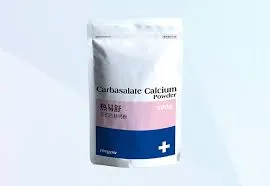- Afrikaans
- Albanian
- Amharic
- Arabic
- Armenian
- Azerbaijani
- Basque
- Belarusian
- Bengali
- Bosnian
- Bulgarian
- Catalan
- Cebuano
- Corsican
- Croatian
- Czech
- Danish
- Dutch
- English
- Esperanto
- Estonian
- Finnish
- French
- Frisian
- Galician
- Georgian
- German
- Greek
- Gujarati
- Haitian Creole
- hausa
- hawaiian
- Hebrew
- Hindi
- Miao
- Hungarian
- Icelandic
- igbo
- Indonesian
- irish
- Italian
- Japanese
- Javanese
- Kannada
- kazakh
- Khmer
- Rwandese
- Korean
- Kurdish
- Kyrgyz
- Lao
- Latin
- Latvian
- Lithuanian
- Luxembourgish
- Macedonian
- Malgashi
- Malay
- Malayalam
- Maltese
- Maori
- Marathi
- Mongolian
- Myanmar
- Nepali
- Norwegian
- Norwegian
- Occitan
- Pashto
- Persian
- Polish
- Portuguese
- Punjabi
- Romanian
- Russian
- Samoan
- Scottish Gaelic
- Serbian
- Sesotho
- Shona
- Sindhi
- Sinhala
- Slovak
- Slovenian
- Somali
- Spanish
- Sundanese
- Swahili
- Swedish
- Tagalog
- Tajik
- Tamil
- Tatar
- Telugu
- Thai
- Turkish
- Turkmen
- Ukrainian
- Urdu
- Uighur
- Uzbek
- Vietnamese
- Welsh
- Bantu
- Yiddish
- Yoruba
- Zulu
nóv . 06, 2024 00:30 Back to list
Exploring the Applications and Benefits of Buparvaquone Injection in Veterinary Medicine
The Use of Buparvaquone Injection in Veterinary Medicine
Buparvaquone is an innovative medication that has garnered attention in the field of veterinary medicine, primarily for its effectiveness in treating certain protozoal infections in livestock, particularly those caused by *Theileria* species. Understanding its application and significance can help veterinarians and livestock producers make informed decisions about animal health management.
Mechanism of Action
Buparvaquone is an isocoumarin derivative that exhibits a novel mechanism of action. It interferes with the mitochondrial respiratory chain of protozoa, leading to the disruption of oxidative phosphorylation. This mechanism inhibits the energy production necessary for the survival and multiplication of the parasites. Notably, Buparvaquone is specifically effective against *Theileria annulata* and *Theileria parva*, which are known to cause significant economic losses in cattle due to diseases such as tropical theileriosis.
Indications for Use
The primary indication for buparvaquone injection is the treatment of bovine theileriosis. This disease is prevalent in tropical and subtropical regions, where it is transmitted by ticks, affecting the health and productivity of cattle. Infected animals typically exhibit clinical symptoms such as fever, anemia, and sometimes neurological signs, leading to increased mortality if not treated promptly. Buparvaquone has demonstrated efficacy in controlling these infections, leading to improved recovery rates in affected cattle.
Administration and Dosage
buparvaquone injection use

Buparvaquone is typically administered via subcutaneous injection. The recommended dosage may vary based on the specific formulation and the severity of the infection, so it is crucial to follow the manufacturer's guidelines or a veterinarian's advice for dosage and administration specifics. Ensuring proper administration technique is essential to maximize the drug's effectiveness and minimize the risk of adverse reactions.
Safety and Side Effects
One of the advantages of buparvaquone is its relatively safe profile when used as directed. The reported side effects are minimal, often including mild transient reactions at the injection site. However, it is essential to monitor livestock for any unusual signs following administration. Veterinarians should always weigh the risk of reaction against the benefits of treatment, particularly in healthy animals or those with concurrent health issues.
Efficacy and Resistance
Research has shown that buparvaquone is often more effective than older treatments against *Theileria* infections, especially in cases where parasites have developed resistance to other antiprotozoal drugs. This efficacy makes buparvaquone a valuable addition to the clinical toolkit for veterinarians faced with resistant strains. The emergence of drug resistance is a growing concern in veterinary medicine, and ongoing research is critical to understanding the long-term implications of using medications like buparvaquone.
Conclusion
In summary, buparvaquone injection represents a significant advancement in the treatment of protozoal infections in livestock, particularly in combating theileriosis. Its unique mechanism of action, efficacy, and safety profile make it a preferred choice for veterinarians dealing with these challenging infections. As the livestock industry continues to evolve, the development and use of such targeted therapies will be crucial in managing animal health and ensuring optimal productivity. Ongoing research and vigilance in monitoring for resistance will further enhance the effectiveness of buparvaquone and promote sustainable veterinary practices in livestock management.
-
Guide to Oxytetracycline Injection
NewsMar.27,2025
-
Guide to Colistin Sulphate
NewsMar.27,2025
-
Gentamicin Sulfate: Uses, Price, And Key Information
NewsMar.27,2025
-
Enrofloxacin Injection: Uses, Price, And Supplier Information
NewsMar.27,2025
-
Dexamethasone Sodium Phosphate Injection: Uses, Price, And Key Information
NewsMar.27,2025
-
Albendazole Tablet: Uses, Dosage, Cost, And Key Information
NewsMar.27,2025













